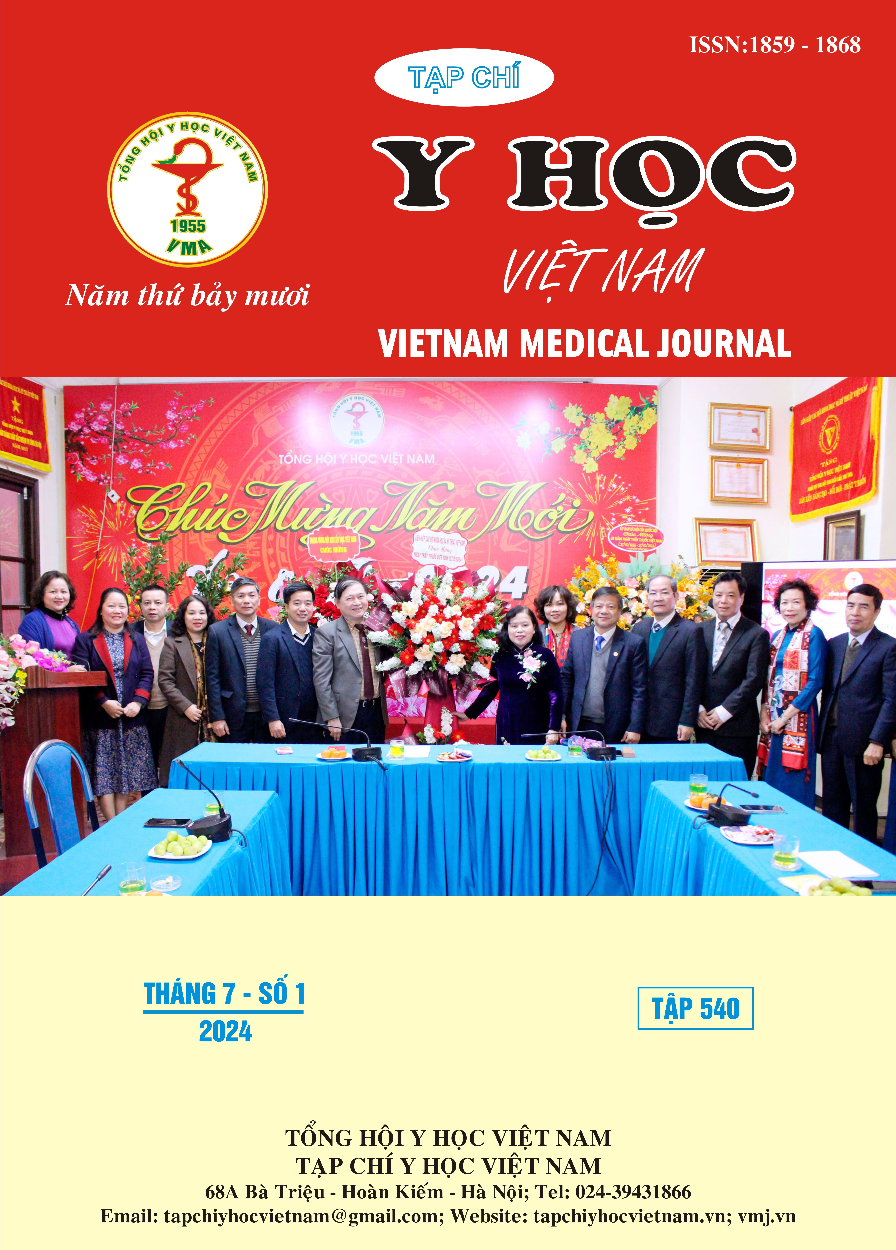FACTORS RELATED TO RESULTS OF SWALLOWING DISORDERS TREATMENT IN PATIENTS WITH ISCHEMIC STROKE BY SWALLOWING EXERCISES COMBINED WITH FOOD THICKENERS AGENTS
Main Article Content
Abstract
Objectives: Identifying some factors to results of swallowing disorder treatment in patients with ischemic stroke by swallowing exercises combined with food thickeners agents. Patients and methodology: Intervention study comparing before and after treatment was conducted on 33 stroke patients with swallowing disorder at Hanoi Rehabilitation Hospital. Results: Patients entering the hospital had mild to moderate swallowing disorders, accounting for 87.9%, with only a small number of patients having severe swallowing disorders, at 12.2%. Evaluation after 15 days of intervention did not show any difference between age and treatment results (p>0.05). There was no difference between genders in the treatment results of the groups without swallowing disorders, mild, moderate and severe swallowing disorders. There is a difference in the rate of damage to the right hemisphere and left hemisphere with the results of swallowing disorder recovery (p<0.05). The difference was statistically significant at all 3 intervention times of 1-4 weeks (<0.001); 1-2 months (p=0.001) and >2 months (<0.01) show that early intervention affects treatment results after 15 days. Conclusion: We found a difference in the rate damage to the right and left hemispheres results in recovery of swallowing disorders (p<0.05). The earlier the swallowing intervention is initiated, the higher the likelihood of recovery from swallowing disorders, and the rate of recovery of swallowing function is higher in the group of patients with early intervention less than 1 month. No relationship between age and gender on treatment outcomes has been found.
Article Details
Keywords
ischemic stroke, swallowing disorder, food thickening agents, swallowing exercises, related factors.
References
2. Johnson CO, Nguyen M, Roth GA et al (2019). Global, regional, and national burden of stroke, 1990–2016: a systematic analysis for the Global Burden of Disease Study 2016. The Lancet Neurology;18(5):439-458.
3. Bath PMW, Bath–Hextall FJ, Smithard DG (1999). Interventions for Dysphasia after Hemispheric stroke. J Neurol. 52, 236-241.
4. National Stroke foundation (2010). Clinical guilines for stroke Management 2010. Melbourne, Australia.
5. Newman Rea (2016). Effect of Bolus Viscosity on the Safety and Efficacy of Swallowing and the Kinematics of the Swallow Response in Patients with Oropharyngeal Dysphagia: White Paper by the European Society for Swallowing Disorders (ESSD). Dysphagia; 31,2:232-49.
6. Mann et al (2002). Mann of Assessment and Management of Dysphagia Post Stroke. Northeast Florida Medicine 58(2).
7. Bùi Thị Hồng Thúy (2019). Đánh giá hiệu quả điều trị rối loạn nuốt ở bệnh nhân nhồi máu não trên lều bằng các bài tập nuốt kết hợp liệu pháp phản hồi sinh học. Luận văn Bác sĩ chuyên khoa II, Đại học Y Hà Nội.
8. Hughes TA, Wiles CM (1996). Clinical measurement of swallowing in health and in neurogenic dysphagia. QJM: An International Journal of Medicine,89(2):109-116.
9. Kwakkel G, Lindeman E (2004). Understanding the pattern of functional recovery after stroke: Facts and theories. Restorative Neurology and Neuroscience. 2004:22:281-299.


